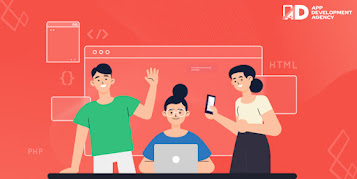What do Microsoft, AWS, and Cloudflare have in common? All these services are subscription based and allows users to avail services after signup and payment for a specified time period.
App Development Agency's Official Blog
Friday, April 5, 2024
Steps In The SaaS Product Development Process
Sunday, April 16, 2023
Ultimate Guide To Travel Mobile App Development
Travel mobile apps have changed the way things are done completely. Travel agencies are nowadays in decline and people prefer to use mobile apps to plan their trips conveniently from the comfort of their smartphones. If you’re looking to establish your footstep in this highly lucrative business, then this blog is meant for you.
Monday, April 10, 2023
Create Apps Like Otter.Ai: Best Speech-To-Text Transcription Service
Transcription is used to convert recorded speech to text. It takes time to be an expert at transcription. Police interviews, research project interviews, legal inquiries, and lectures are some of the probable use cases of speech-to-text transcription services. Here are some cues on how one of the best transcription apps/note-taking apps like Otter.ai works and what features it offers.
Tuesday, March 21, 2023
Overturn Your Impulsions With Crikey On-Demand Flower Delivery Apps
Flowers are ideal for expressing joy and celebrating any occasion. A service delivery platform to enable on-demand flower delivery ensures that every single customer is attended to. As the customers verify their identity by entering their information into the app, they can specify where and what flowers they want to be sent to them. After they finish the booking with a florist in their area, the flower delivery app will send them a text message. Here’s our take on the importance to have a flower delivery app like Floward, and some more!
Wednesday, March 15, 2023
E-commerce Trends To Embrace In Your Next Big Online Project
E-commerce has revolutionized the way people shop, offering customers convenience and access to products from around the world that would otherwise not be available. With its rapid growth, more companies are investing heavily in technology to ensure their businesses remain competitive and their customers have a reliable experience. Here are the top E-commerce trends for 2023!
Saturday, March 4, 2023
Best Machine Learning Platforms Gather, Analyze, And Spot Trends & Patterns In Data
Tuesday, February 7, 2023
An Ultimate Guide To Mobile App Development Tools: Discover Your App Idea’s True Potential
Looking for the best mobile app development tools and platforms? Mobile app developer tools ease the development journey by offering developers access to various IDEs, templates, API, data synchronizations, analytics, code-free deployment, and so on. Here in this blog, we got the recommendation of the best development tools that you can try.
Monday, February 6, 2023
How To Make A Software Development Plan For Your Dev Team?
Software development is one of the greatest endeavors irrespective of the size and domain of the business. Therefore proper development plan and execution is a must to ensure the success of your project. The goal of this blog is to teach you how to create a software development plan to ensure that your development team remains on track.
Saturday, February 4, 2023
Let’s Create An App Like Discord: Meaning, Pros, Cons, Steps
Voice over internet protocol isn’t new technology. Such applications make use of new protocols for faster and better communication. Plus the cost to maintain such VoIP apps is minimal. This makes it easier for voice chat apps, video conferencing apps, and gaming apps to assimilate the benefits at a lower investment with higher possible returns. As we find the VoIP industry making space for AI and ML in brand customer communications, chatbots, and virtual assistants will be a huge fit and anything over and above is always acceptable! For more about App Like Discord
Thursday, February 2, 2023
Emerging Laravel Framework: How Does It Instill Confidence In Web Apps?
Laravel provides model, view, and controller-based architectural patterns and it has an expressive syntax that makes it object-oriented and relatively easy to use. Amongst 40 PHP frameworks, what makes Laravel Framework stand out? It definitely stands out amongst many others like CodeIgniter, Symfony, Laminas Project, Phalcon, CakePHP, Yii, FuelPHP, Slim, PHPixie, and Fat-Free Framework, to name the best few. Plus, Laravel is definitely an advancement over early PHP frameworks like PHPlib, Pear, and Horde. Here’s more on Laravel, why it is preferred, and the types of applications that we can build by using it!









